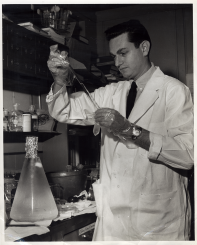“Bacteria dominate newly drawn tree of life
Scientists at the University of California at Berkeley and the University of Waterloo in Canada studied more than 3,000 species and pieced together bits of DNA to update the tree of life. The tree is dominated by bacteria, while all the eukaryotes are represented on a slender twig. The work is published in the journal Nature Microbiology.” The New York Times (free-article access for SmartBrief readers) (4/11)
APRIL 11, 2016
“A version of this article appears in print on April 12, 2016, on page D2 of the New York edition with the headline: The Tiniest Beings Writ Large.A version of this article appears in print on April 12, 2016, on page D2 of the New York edition with the headline: The Tiniest Beings Writ Large.”
From FBR SmartBrief <fbr@smartbrief.com> Wed., April 13, 2016


You must be logged in to post a comment.